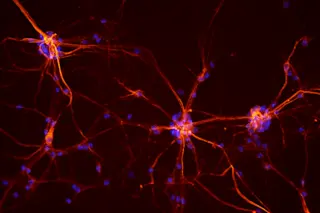Credit: NICHD/S. Jeong Injuries to the central nervous system — the brain and spinal cord — are particularly devastating because the body doesn't regenerate neurons to repair connections between vital circuits and restore function. In other words, the damage is permanent or even fatal. A variety of early studies in animals and humans indicate the field of neural regeneration research is advancing. A 20-year-old man in Naples, Florida recently enrolled in the first clinical trial to assess the ability of stem cells to repair spinal cord injuries. But, a team of scientists from McGill University in Montreal, Canada, are working an entirely different method to inject hope into an otherwise bleak prognosis. Working with rat neurons grown in a petri dish in the laboratory, the team artificially connected two neurons using an atomic force microscope and tiny, polystyrene spheres. Though the work is an early proof-of-concept, it could lay the ...
Scientists Connect Neurons in the Lab for the First Time
Discover exciting advances in neural regeneration research aimed at restoring function after spinal cord injuries and restoring brain networks.
More on Discover
Stay Curious
SubscribeTo The Magazine
Save up to 40% off the cover price when you subscribe to Discover magazine.
Subscribe













